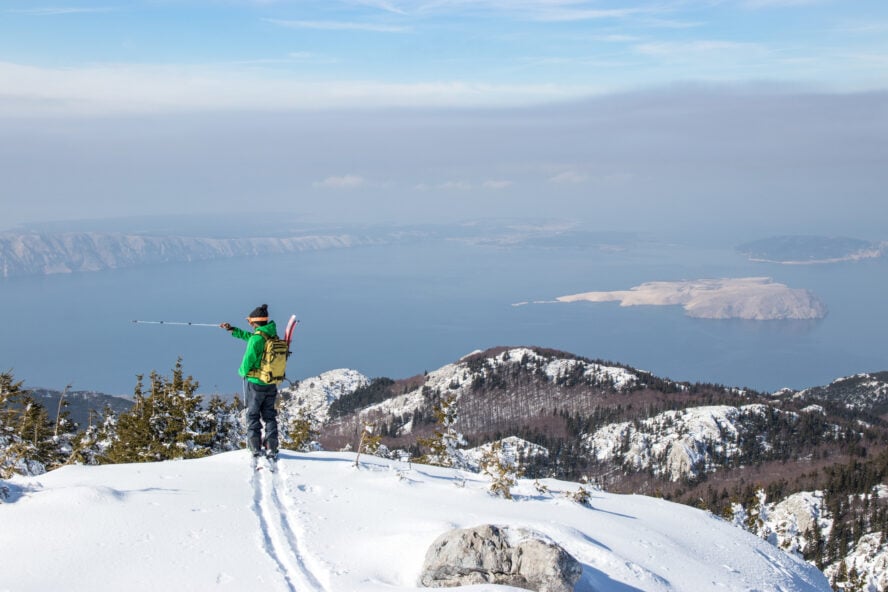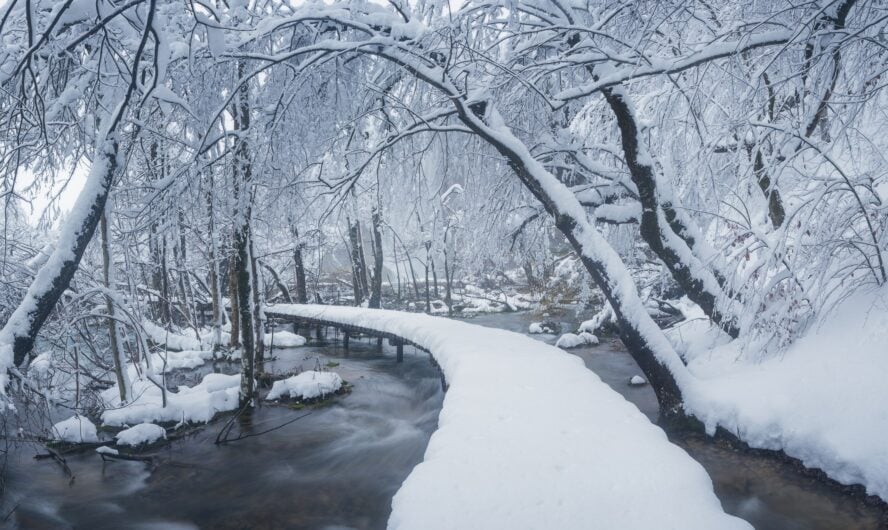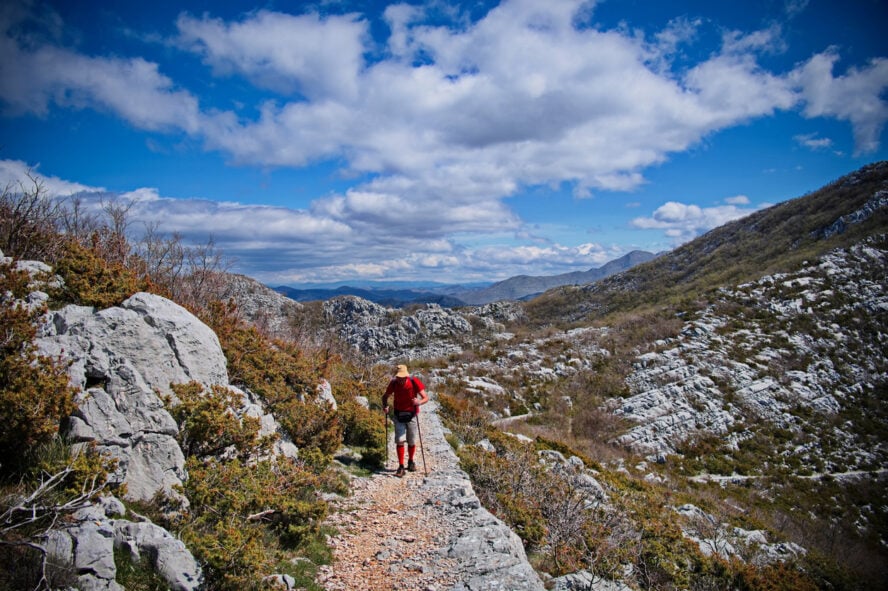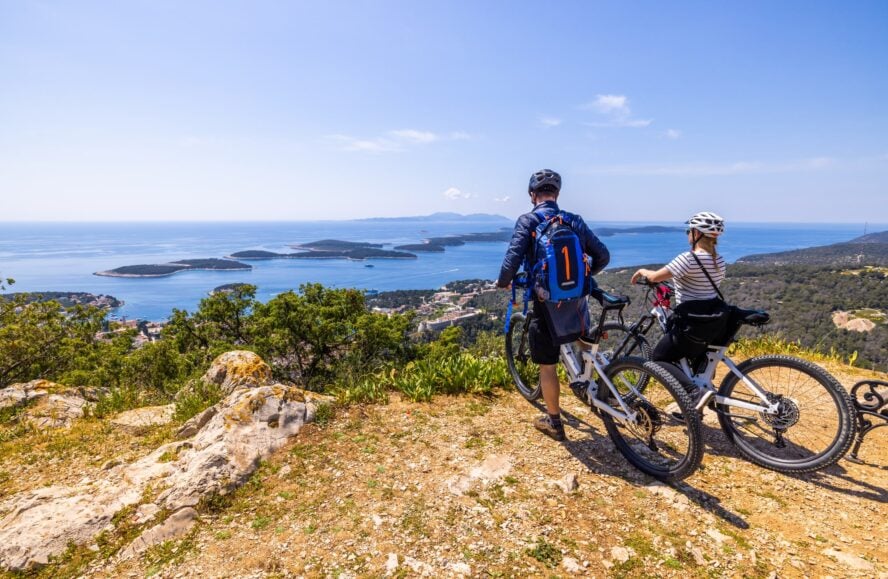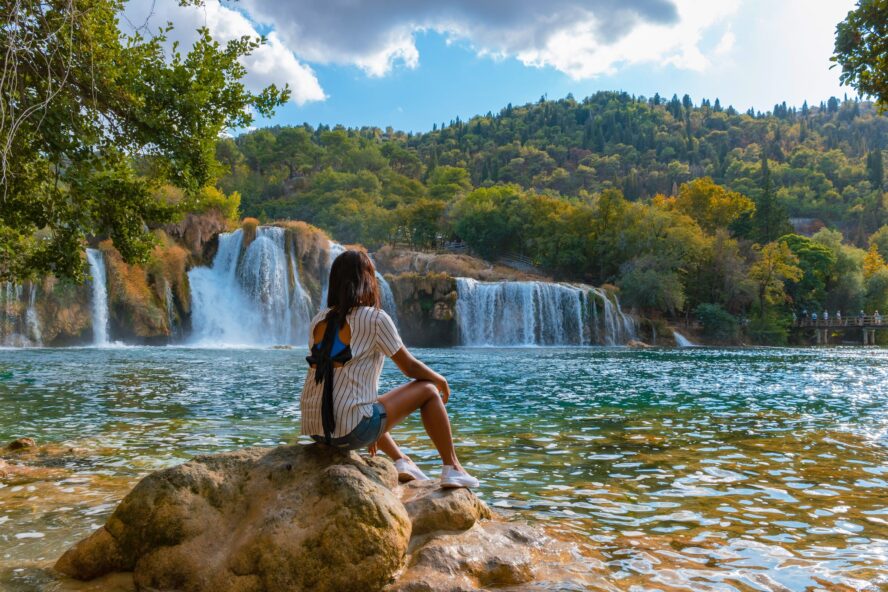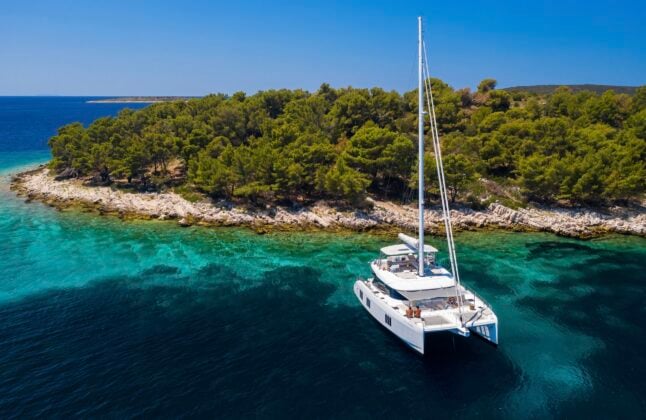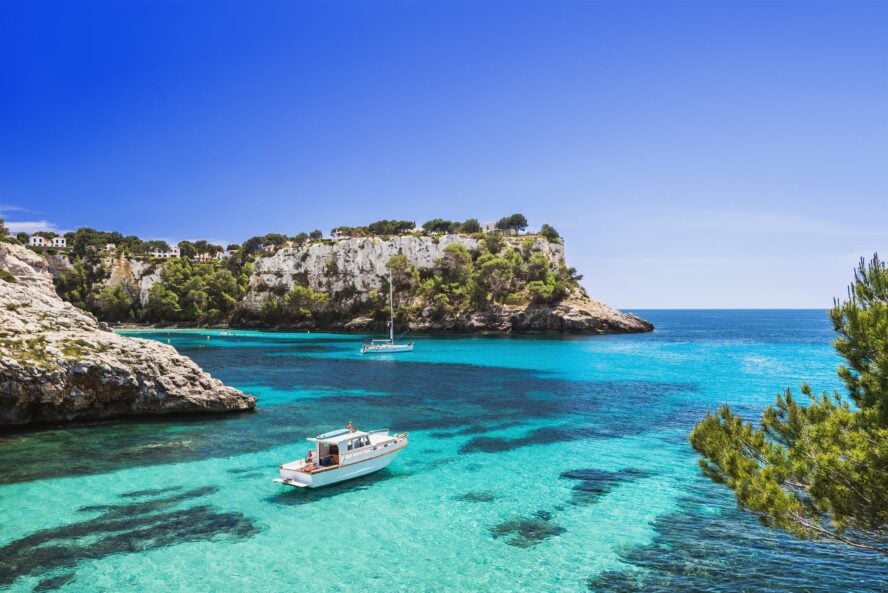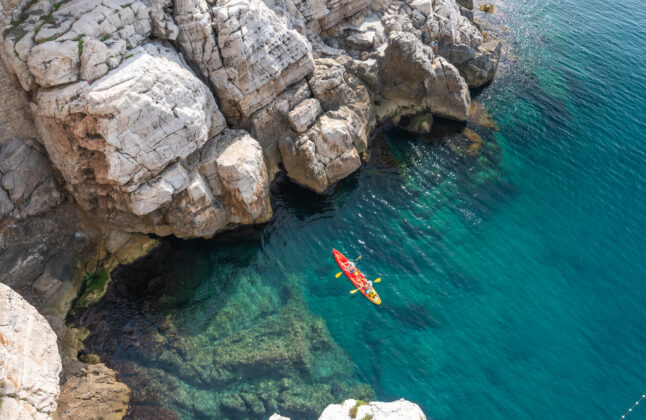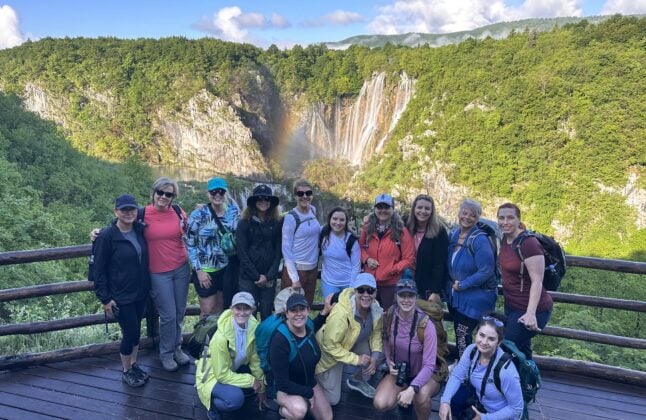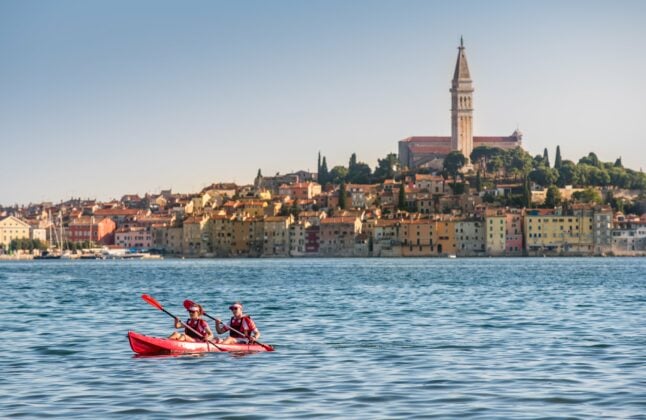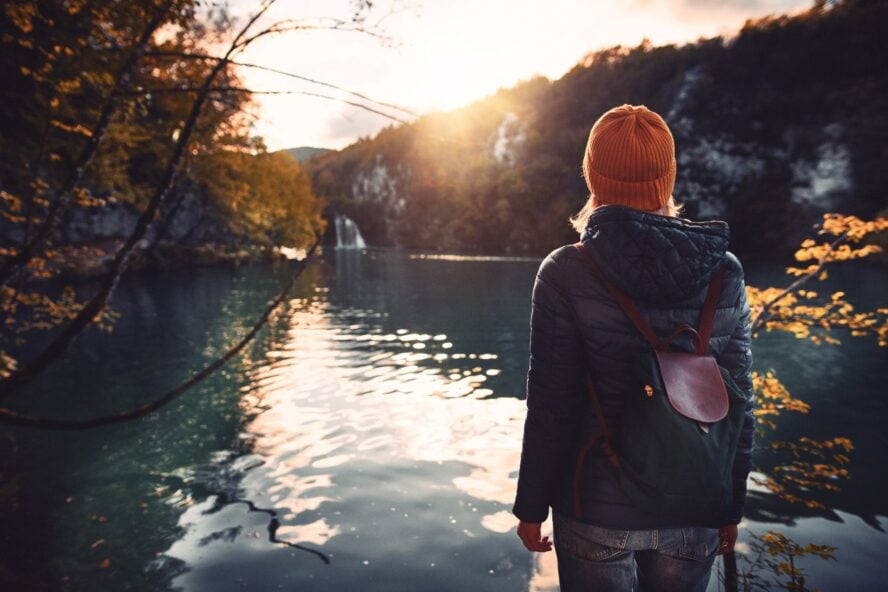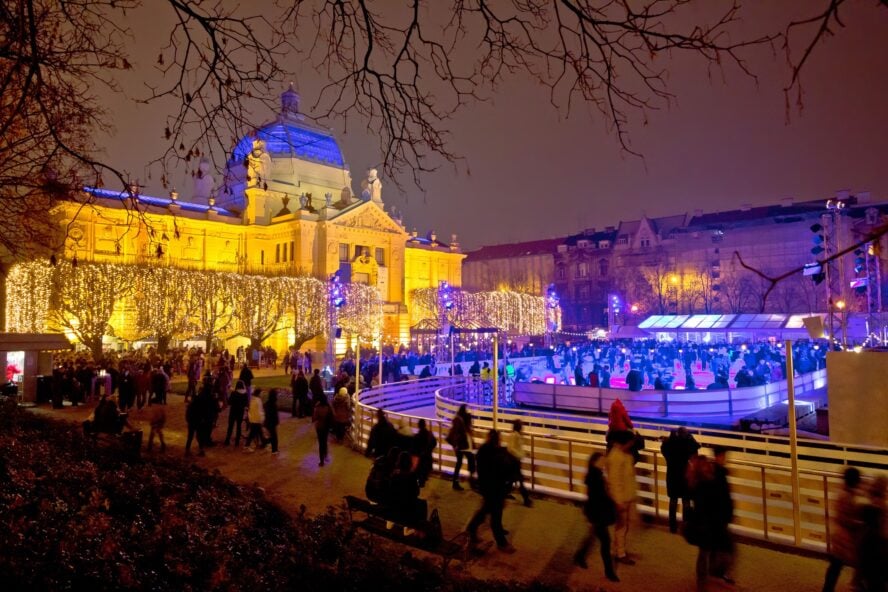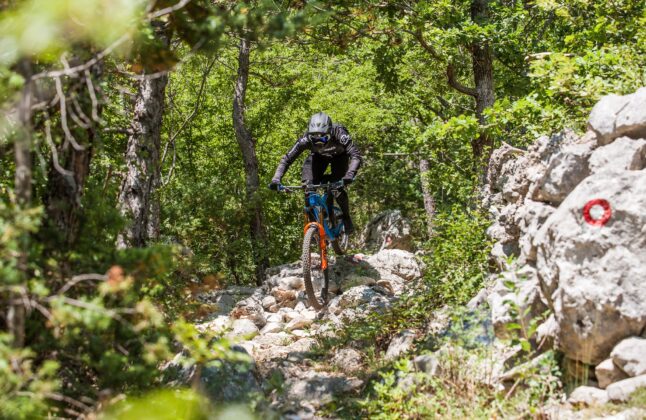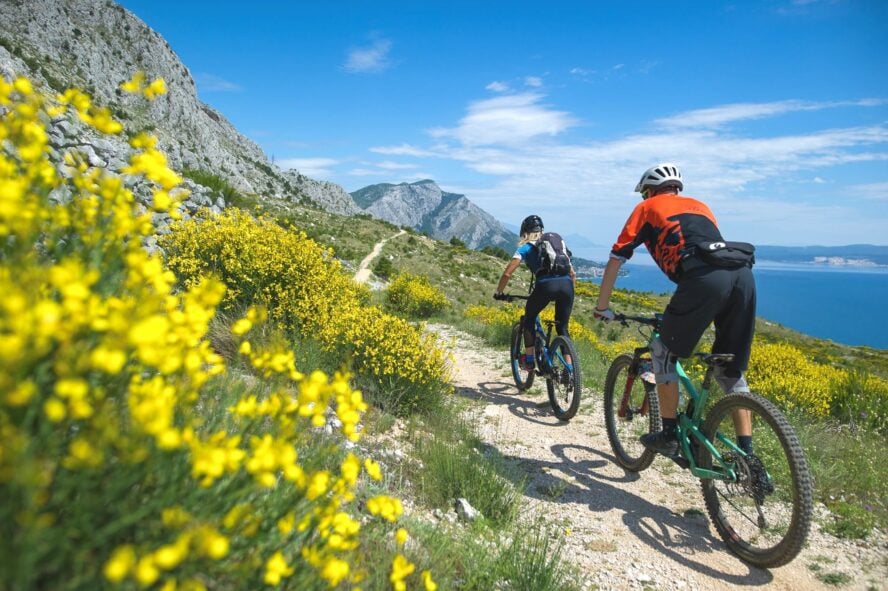Croatia, with its dazzling coastline, historic cities, and rugged mountains, is a destination that grabs your heart and doesn’t let go. But what is the best time to visit Croatia?
Whether you’re dreaming of island-hopping in Dalmatia, hiking Plitvice Lakes, or savoring truffles in Istria, timing your visit is key to unlocking the magic.
As locals, we’re here to spill the secrets on when to come, what to expect, and how to make the most of your adventure. Let’s find your perfect moment to explore our homeland!
What is the Best Time to Visit Croatia?
The best time to visit Croatia depends on what kind of adventure you’re chasing.
Into vibrant festivals, quiet trails, or budget-friendly travel? We’ll break down each month so you can plan your Croatian vacation properly.
Prefer video to reading? Local guide Ivo Jarić shared a webinar packed with tips for your first Croatian vacation. You can check it out here!
Best Time to Visit Croatia – Winter
Why You Should Visit Croatia in January
January in Croatia is a quiet, cozy affair, perfect for those seeking a serene escape.
Cities like Zagreb glow with post-holiday charm, while coastal towns like Dubrovnik offer peaceful walks along historic walls. It’s prime time for skiing in the mountains or soaking in thermal spas in Krapina. With fewer tourists, you’ll feel like a local, sipping coffee in quaint cafes or exploring museums.
This month suits budget travelers and winter sports enthusiasts looking for an authentic experience.
Croatia Weather in January
Expect chilly temperatures, averaging 0-5°C (32-41°F) in inland areas like Zagreb and -2 to 3°C (28-37°F) in mountainous regions.
Coastal areas like Split and Dubrovnik are milder, ranging from 5-10°C (41-50°F). Snow is common inland, especially in Gorski Kotar, while the coast sees rain and occasional sunny days.
Daylight lasts about 9 hours, which means ample time for indoor or winter outdoor adventures.
Local Tips for Visiting Croatia in January
- Ski the slopes: Head to Sljeme near Zagreb for beginner-friendly runs.
- Warm up in spas: Visit Krapina’s thermal baths for a relaxing soak after a chilly day.
- Pack layers: Bring waterproof jackets and warm clothing for unpredictable weather.
- Enjoy indoor culture: Explore Zagreb’s Museum of Broken Relationships or Dubrovnik’s Maritime Museum.
Why You Should Visit Croatia in February
February keeps Croatia in off-season mode. It’s ideal if you’re craving solitude—and savings!
The carnival season (Rijeka’s is legendary) brings colorful parades and lively vibes. Coastal towns remain calm. It’s a good time for exploring spots like Split’s Diocletian’s Palace without the crowds. It’s also a great time for hiking in milder coastal areas or skiing if snow lingers.
February is ideal for culture lovers and those who love a festive twist.
Croatia Weather in February
Temperatures inch up slightly, with inland areas at 2-7°C (36-45°F) and coastal regions at 6-11°C (43-52°F). Snowfall persists in the mountains, while the coast gets rain with occasional clear days.
Expect 10 hours of daylight, offering a bit more time to explore. Winds like the bura (a cold northeasterly gust) can sweep the coast, so be prepared.
Local Tips for Visiting Croatia in February
- Join the carnival: Catch Rijeka’s vibrant Carnival parades for a dose of local culture.
- Hike the coast: Try easy trails near towns like Zadar for mild weather and sea views.
- Dress for wind: A windproof jacket is a must for coastal bura gusts.
- Savor indoor dining: Try hearty Istrian truffle dishes in cozy taverns.
- Book early: Carnival season can fill accommodations in Rijeka, so plan ahead.
Why You Should Visit Croatia in March
March marks the start of spring, with blooming landscapes and fewer tourists.
It’s a sweet spot for hiking in national parks like Plitvice Lakes, where waterfalls roar with snowmelt. Coastal cities like Zadar come alive with mild weather, ideal for cycling or kayaking. Cultural events, like Zagreb’s film festivals, add a creative spark.
March suits active travelers and those seeking a budget-friendly trip with a springtime glow.
Croatia Weather in March
Inland temperatures range from 5-12°C (41-54°F), while the coast enjoys 8-14°C (46-57°F). Rain is common but less frequent, with 11 hours of daylight.
National parks see muddy trails from snowmelt, but the coast starts to feel balmy. The bura wind may still blow, but sunny days are more frequent, especially in Dalmatia.
Local Tips for Visiting Croatia in March
- Hike Plitvice: See the world-famous waterfalls of Plitvice Lakes without the crowds.
- Cycle the coast: Get out for some scenic rides along the Adriatic.
- Pack for rain: Waterproof boots and a light rain jacket are essential.
- Explore festivals: Catch Zagreb’s DocuFilm Festival for a cultural fix.
Best Time to Visit Croatia – Spring
Why You Should Visit Croatia in April
April is a dream for outdoor lovers, with blooming wildflowers and perfect hiking weather.
National parks like Paklenica are ideal for climbing and trekking, while islands like Hvar offer quiet beaches and cycling routes. Coastal towns buzz with early-season energy, and prices remain lower than summer.
April is for hikers, cyclists, and those who want a taste of summer without the crowds.
Croatia Weather in April
Temperatures climb to 10-17°C (50-63°F) inland and 12-18°C (54-64°F) on the coast.
Rainfall decreases, though showers are still possible. With 13 hours of daylight, you’ve got plenty of time for adventures. The Adriatic starts warming up, reaching 14°C (57°F), suitable for brave swimmers or kayakers.
Local Tips for Visiting Croatia in April
- Climb in Paklenica: Take on Croatia’s stunning limestone cliffs.
- Island-hop early: Visit Hvar or Korčula for quiet beaches and outdoor adventures.
- Pack versatile gear: Layered clothing handles cool mornings and warm afternoons.
- Taste spring flavors: Try wild asparagus dishes in coastal taverns.
Why You Should Visit Croatia in May
May is a golden month, balancing warm weather, blooming nature, and manageable crowds.
It’s perfect for sailing along the Dalmatian coast or hiking in Krka National Park. Coastal cities like Split are lively but not packed, and festivals like Split’s St. Duje Day add local flair.
May suits sailors, hikers, and culture enthusiasts looking for vibrant yet relaxed vibes.
Croatia Weather in May
Expect pleasant 15-22°C (59-72°F) inland and 16-23°C (61-73°F) on the coast.
Rainfall is minimal, with 14 hours of daylight for long days of exploration. The sea warms to 18°C (64°F), ideal for swimming or kayaking. Sunny days dominate, with occasional light showers in inland areas.
Local Tips for Visiting Croatia in May
- Sail the Adriatic: Book a sailing & island-hopping tour to explore islands like Vis or Brač.
- Hike Krka: Enjoy waterfalls and cool, renewed trails with fewer visitors.
- Pack sunscreen: The sun gets strong, especially on the coast or open water.
- Celebrate St. Duje: Join Split’s patron saint festival for music and street food.
Why You Should Visit Croatia in June
June kicks off summer with warm days, clear skies, and buzzing energy.
It’s prime time for beachgoers, sailors, and hikers hitting trails in Biokovo or Velebit. Islands like Mljet are lush and inviting, while Dubrovnik’s Summer Festival starts to hum.
June is for those craving sun-soaked adventures with a touch of festive spirit, just before peak crowds hit.
Croatia Weather in June
Temperatures soar to 20-27°C (68-81°F) inland and 21-28°C (70-82°F) on the coast.
Rainfall is rare, with 15 hours of daylight and sea temperatures at 22°C (72°F), perfect for swimming. Clear skies and warm evenings make it ideal for outdoor activities, though inland areas may see brief showers.
Local Tips for Visiting Croatia in June
- Sail with ease: Enjoy crowd-free island-hopping.
- Hike Biokovo: Tackle high trails with stunning Adriatic views.
- Pack light: Breathable clothing and a hat are key for sunny days.
- Enjoy festivals: Catch early events of Dubrovnik’s Summer Festival for music and theater.
- Book ahead: June gets busy. Book accommodations and activities way early.
Best Time to Visit Croatia – Summer
Why You Should Visit Croatia in July
July is Croatia’s peak season, bursting with sun, sea, and vibrant energy.
Beaches on Hvar and Brač are packed with sunbathers, while sailors flock to the Kornati Islands. Music festivals like Ultra Europe in Split draw partygoers, and hiking in cooler mountain areas like Dinara is a treat.
July is for beach lovers, festival fans, and those who thrive in lively crowds.
Croatia Weather in July
It’s hot, with inland temps at 23-30°C (73-86°F) and coastal areas at 24-31°C (75-88°F).
Rainfall is nearly nonexistent, with 15 hours of daylight and sea temperatures at 24°C (75°F), ideal for swimming and water sports. Expect intense sun and warm nights, perfect for al fresco dining.
Local Tips for Visiting Croatia in July
- Beat the heat: Head out for bike and hiking tours early for cooler temps.
- Book ferries early: Island-hopping is popular, so score yourself a charter.
- Stay hydrated: Carry a reusable water bottle for long beach or hiking days.
- Hit festivals: Dance at Ultra Europe or enjoy local music in Dubrovnik.
Want to learn more about sailing and mountain biking in Croatia? Check out this webinar hosted by seasoned guide Ivo Jarić!
Why You Should Visit Croatia in August
August is the height of summer, with packed beaches, bustling coastal towns, and endless sunshine.
It’s ideal for water sports like kayaking in Dubrovnik or diving in Vis. Inland, hiking in Risnjak National Park offers cooler escapes. Festivals keep the vibe festive.
This month suits sun-seekers and families ready for a lively Mediterranean adventure.
Croatia Weather in August
Temperatures peak at 24-31°C (75-88°F) inland and 25-32°C (77-90°F) on the coast.
Rain is rare, with 14 hours of daylight and sea temps at 25°C (77°F), perfect for water activities. Hot days and balmy nights make it ideal for outdoor fun, though crowds can feel intense.
Local Tips for Visiting Croatia in August
- Kayak early: Book dawn kayaking tours & boat rentals to avoid crowds.
- Escape to Risnjak: Hike cooler mountain trails with our expert guides.
- Pack for heat: Lightweight clothing, sunscreen, and sunglasses are musts.
- Enjoy festivals: Join Šibenik’s family-friendly events for cultural fun.
Why You Should Visit Croatia in September
September is a locals’ favorite, as it blends summer temps with fewer crowds.
Beaches remain inviting, and sailing or kayaking is blissful with calmer seas. Hiking in Plitvice or cycling in Istria is perfect with mild weather. Wine harvest festivals in Pelješac add a tasty touch.
September is for those seeking sunny days, outdoor adventures, and a relaxed vibe.
Croatia Weather in September
Temperatures cool slightly to 18-25°C (64-77°F) inland and 20-26°C (68-79°F) on the coast.
Rainfall is low, with 12 hours of daylight and sea temps at 23°C (73°F), still great for swimming. Expect sunny days with occasional showers, especially inland.
Local Tips for Visiting Croatia in September
- Cycle Istria: Join guided bike tours for scenic vineyards and truffle country.
- Sail quietly: Explore islands like Korčula with fewer boats.
- Pack layers: Evenings cool down, so bring a light jacket.
- Taste the harvest: Visit Pelješac’s wine festivals for local reds and oysters.
Best Time to Visit Croatia – Fall
Why You Should Visit Croatia in October
October brings crisp air, golden foliage, and tranquil vibes.
It’s ideal for hiking in Paklenica or exploring Istria’s truffle festivals. Coastal towns like Rovinj are quiet. Perfect for leisurely walks or cycling. The sea is still warm enough for brave swimmers.
October suits foodies, hikers, and those craving an off-season escape.
Croatia Weather in October
Inland temps drop to 12-20°C (54-68°F), while the coast stays at 15-22°C (59-72°F).
Rainfall increases, with 11 hours of daylight and sea temps at 20°C (68°F). Expect a mix of sunny days and showers, with vibrant autumn colors in national parks.
Local Tips for Visiting Croatia in October
- Hunt truffles: Head to Istria for truffle-tasting adventures.
- Hike Paklenica: Enjoy crisp trails and stunning views.
- Pack for rain: Waterproof gear is key for autumn showers.
- Explore Rovinj: Wander its charming streets without summer crowds.
Why You Should Visit Croatia in November
November is Croatia’s quiet season, perfect for budget travelers and culture buffs.
Zagreb’s Advent markets start late in the month, offering festive charm. Coastal towns are peaceful, ideal for exploring Dubrovnik’s walls or Split’s markets. Inland, hiking in Plitvice is serene with autumn hues.
November is for those seeking calm and cozy experiences.
Croatia Weather in November
Temperatures range from 5-12°C (41-54°F) inland and 10-16°C (50-61°F) on the coast.
Rain is frequent, with 10 hours of daylight. The sea cools to 17°C (63°F), less ideal for swimming but fine for kayaking. Inland areas may see early snow, especially in mountains.
Local Tips for Visiting Croatia in November
- Catch the early Advent: Explore Zagreb’s festive pre-Advent markets.
- Hike Plitvice: Enjoy quiet trails and autumn colors with guided support.
- Pack warm: Rain gear and warm layers are essential for chilly days.
- Savor seafood: Visit coastal konobas for fresh fish and local wines.
Why You Should Visit Croatia in December
December wraps Croatia in festive magic, with Zagreb’s award-winning Advent markets stealing the show.
Coastal towns like Dubrovnik see mild weather ideal for exploring historic sites without crowds. Inland, ski resorts like Sljeme open if snow falls early. This month is for holiday lovers, budget travelers, and those seeking a wintery cultural escape.
Croatia Weather in December
Inland areas see 0-7°C (32-45°F), with possible snow in mountains. Coastal regions range from 7-13°C (45-55°F), with frequent rain but some sunny days.
Daylight drops to 9 hours, and sea temps are 15°C (59°F), better for kayaking than swimming. Expect cozy, festive vibes.
Local Tips for Visiting Croatia in December
- Embrace Advent: Go to Zagreb, Delnice, or other Christmas spots for mulled wine magic.
- Explore Dubrovnik: Walk the otherwise overcrowded city walls in peace.
- Pack for cold: Warm coats and waterproof boots are a must for winter weather.
- Try holiday treats: Savor fritule (they’re like doughnuts) and rakija in local taverns.
Best Time To Visit Croatia? Any time!
Croatia’s charm shines year-round, from sun-soaked summers to festive winter markets.
Pick your month based on your vibe—beaches, festivals, or quiet escapes—and let Croatia’s magic sweep you away.
Ready to explore? Book your adventure with 57hours and dive into the heart of Croatia!


